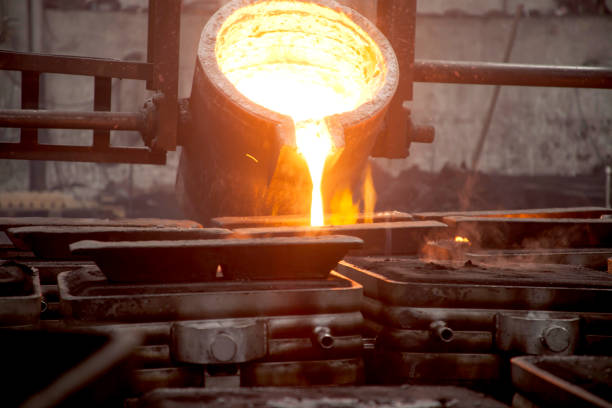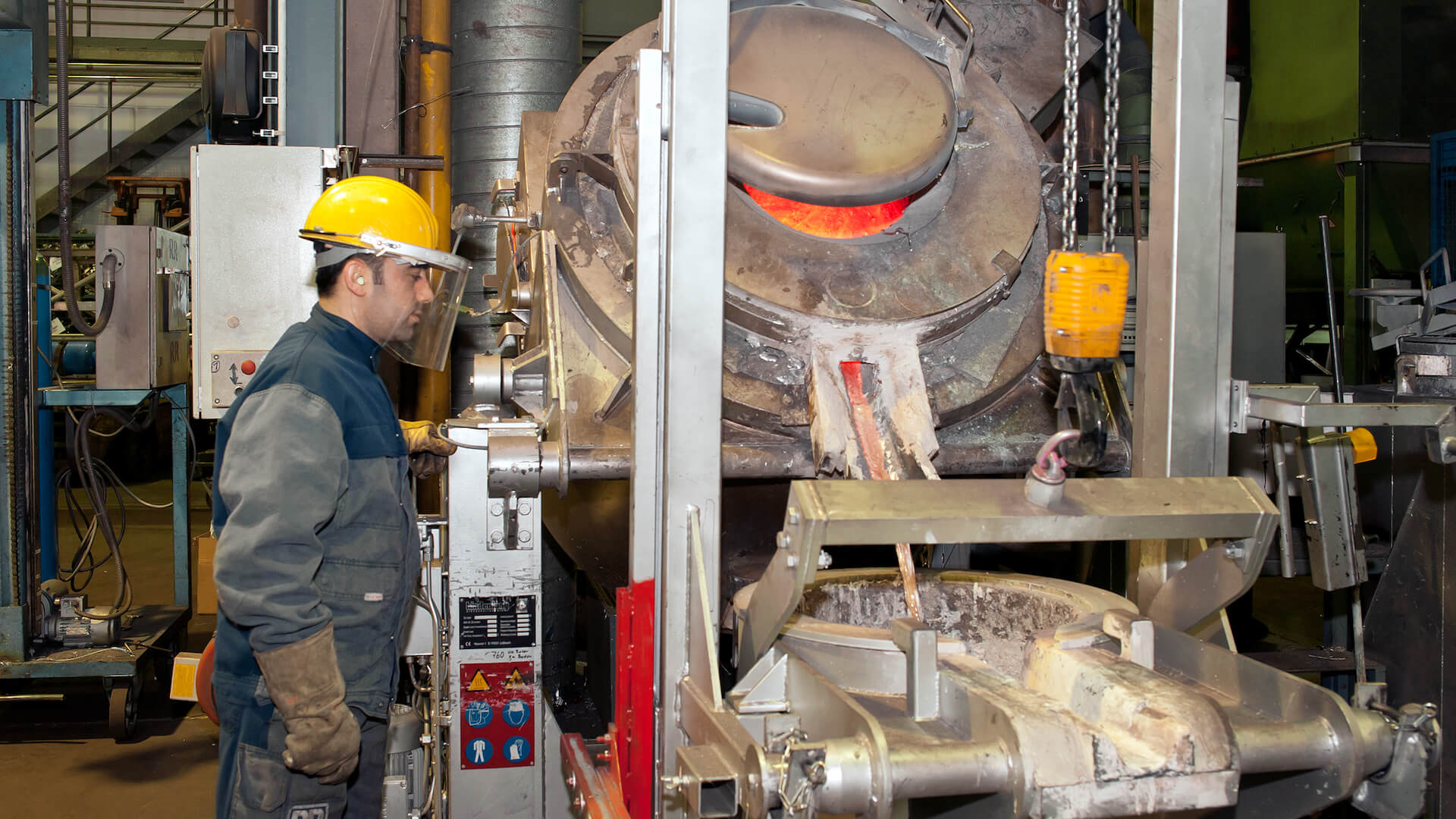Definitive Overview of Wisconsin Aluminum Foundry and Its Impact on U.S. Manufacturing
Wiki Article
Checking Out the Innovative Techniques Made Use Of in Modern Aluminum Foundries
Modern aluminum foundries are undergoing a substantial change via the adoption of cutting-edge techniques. Advanced casting techniques, clever automation, and lasting practices are reshaping manufacturing procedures. These improvements not just boost effectiveness but additionally address environmental issues. As the sector evolves, the combination of electronic technologies plays a crucial role. Understanding these modifications is essential for understanding the future of aluminum manufacturing and its effects for international markets. What lies ahead in this dynamic market?Advanced Casting Techniques

In addition, innovations in thermal control and mold and mildew style have added to even more regular casting results. These developments permit much better control of cooling down rates, reducing defects and boosting mechanical homes. Consequently, manufacturers can develop light-weight yet resilient parts, satisfying the enhancing needs of different industries, including automotive and aerospace, for high-performance aluminum components.
Smart Automation and Robotics
The combination of clever automation and robotics in aluminum foundries notes a significant advancement in producing efficiency. These modern technologies allow accuracy and consistency in manufacturing processes, drastically minimizing human error and boosting safety. Automated robot systems manage repeated jobs, such as molding, pouring, and cooling, permitting human operators to concentrate on more complicated responsibilities that need critical thinking and oversight.Additionally, wise sensing units and AI-driven analytics give real-time data tracking, facilitating predictive upkeep and lessening downtime. This leads to enhanced source allocation and enhanced power intake, adding to general sustainability in manufacturing.
The adaptability of robotic systems enables for fast changes to changing production demands, improving adaptability in production. As foundries increasingly adopt these sophisticated modern technologies, they not only improve operational effectiveness however likewise place themselves as leaders in technology within the steel casting sector.
Additive Production in Foundries
Changing standard manufacturing approaches, additive production is transforming aluminum foundries by allowing the development of complicated geometries that were formerly unattainable. This method permits the layer-by-layer building of parts, considerably lowering material waste and shortening manufacturing times. As a result, foundries can create complex designs that enhance performance and performance, dealing with the growing demands of various sectors.Moreover, additive production promotes quick prototyping, enabling designers to check and iterate designs promptly. This dexterity not only increases the advancement cycle however also aids in determining potential concerns before full-blown manufacturing starts. The integration of innovative products and processes in additive production further enhances the mechanical buildings of aluminum parts, advertising advancement in product style. Consequently, aluminum foundries that take on these methods position themselves at the leading edge of industry improvements, making sure competition in an ever-evolving market landscape.
Sustainable Practices and Recycling
Sustainable techniques in aluminum foundries are progressively concentrated on improving reusing processes and embracing green casting techniques. These technologies aim to decrease waste and power consumption while maximizing making use of recycled products. As the sector develops, the integration of sustainability right into manufacturing methods ends up being essential for satisfying ecological criteria and customer demands.Recycling Process Improvements
As markets increasingly acknowledge the ecological impact of waste, aluminum foundries are adopting ingenious recycling procedure renovations to boost sustainability. These advancements focus on decreasing energy usage and making best use of material recovery. For example, lots of foundries are applying closed-loop systems that reuse scrap aluminum created throughout manufacturing, minimizing waste and lowering the need for virgin products. Advanced sorting technologies, such as automated optical sorting, improve the splitting up of various aluminum qualities, boosting the effectiveness of the recycling process. Additionally, some foundries are utilizing hydrometallurgical methods to recover aluminum from complex waste streams. By incorporating these enhancements, aluminum foundries not only add to a round economic situation yet additionally minimize their carbon footprint, aligning with international sustainability objectives.Eco-Friendly Casting Techniques
While standard casting methods frequently involve substantial energy usage and material waste, aluminum foundries are increasingly taking on green casting methods that prioritize sustainability. Strategies such as low-pressure die casting, which lessens air emissions, and making use of water-based mold and mildew releases add to reduced ecological effect. Additionally, innovations in 3D printing innovation permit the development of complex mold and mildews with less product waste. Several foundries are additionally executing closed-loop systems that reuse water and aluminum scrap, additional lowering resource intake. By embracing renewable resource resources, such as solar and wind power, these facilities improve their sustainability initiatives. Generally, the fostering of environment-friendly practices in aluminum casting not only benefits the setting but likewise advertises economic effectiveness and innovation within the market.Boosted Quality Control Procedures
Boosted quality assurance actions in aluminum foundries are increasingly reliant on innovative inspection modern technologies and real-time surveillance systems. These technologies enable suppliers to spot flaws early and assure consistent product high quality. By incorporating these tools, foundries can markedly improve their operational effectiveness and minimize waste.Advanced Inspection Technologies
Advanced inspection innovations play a crucial role in ensuring the quality and dependability of aluminum castings. These innovative techniques consist of non-destructive testing (NDT) techniques such as ultrasonic testing, radiographic testing, and eddy current you could try these out inspections. Each approach allows for detailed evaluation of castings without compromising their structural integrity. Advanced imaging strategies, such as computed tomography, provide an extensive view of inner attributes, making it possible for the discovery of issues like gaps and incorporations. Furthermore, automated optical evaluation systems enhance precision by using high-resolution electronic cameras and machine knowing algorithms to analyze surface area high quality. By executing these advanced inspection modern technologies, aluminum foundries can properly lessen flaws, guaranteeing that spreadings fulfill rigorous market criteria and consumer requirements.Real-Time Tracking Systems
As makers endeavor for excellence in aluminum casting, real-time surveillance systems become an essential improvement in quality assurance steps. These systems make use of sophisticated sensors and information analytics to constantly track crucial criteria during the casting procedure, such as stress, temperature, and alloy structure. By giving instant responses, they make it possible for drivers to identify variances from perfect problems and make prompt modifications. This aggressive method not just minimizes flaws but likewise boosts overall effectiveness and reduces waste - Wisconsin Aluminum Foundry. Furthermore, assimilation of real-time information into production monitoring systems facilitates much better decision-making and improves traceability. As a result, real-time surveillance systems play an important function in keeping high standards of top quality in modern-day aluminum foundries, making sure that items meet stringent market specsDigital Double Modern Technology for Optimization

The assimilation of electronic twin innovation allows foundries to check different scenarios without disrupting real production. This capacity promotes a proactive strategy to maintenance and source administration, ultimately lowering waste and reducing functional expenses. Additionally, the innovation aids in procedure optimization by allowing designers to visualize the results of changes in real-time, making certain greater quality results. Therefore, aluminum foundries taking on electronic twin modern technology are positioned to accomplish higher efficiency and competitiveness in a significantly demanding market.

Market 4.0 and IoT Integration
The adoption of electronic twin modern technology in aluminum foundries belongs to a wider motion in the direction of Sector 4.0, defined by the assimilation of the Internet of Things (IoT) into producing procedures. This integration enables real-time tracking and information collection from numerous machinery and tools, causing boosted operational efficiency. Sensors embedded in makers collect critical data, which is evaluated to enhance manufacturing process and forecast upkeep demands.Furthermore, IoT devices help with communication between different production stages, enabling seamless coordination and reducing downtime. By leveraging cloud computer, foundries can save and assess substantial quantities of data, allowing more informed decision-making. This modern technology additionally sustains remote monitoring, where operators can look after processes from anywhere, improving responsiveness to manufacturing obstacles. Generally, the combination of Industry 4.0 and IoT within aluminum foundries is transforming conventional methods, making them more agile and receptive to market demands.
Regularly Asked Concerns
What Are the Main Advantages of Aluminum Over Various Other Steels?
Aluminum provides numerous benefits over other metals, including its light-weight nature, exceptional corrosion resistance, high thermal and electric conductivity, malleability, and recyclability, making it a preferred selection for various applications throughout several industries. - Aluminum CastingsJust How Do Modern Foundries Manage Hazardous Materials?
Modern foundries take care of dangerous materials via rigid safety and security methods, advanced purification systems, and recycling approaches. Regular training warranties workers recognize ideal methods, while keeping track of systems identify and alleviate potential dangers to keep a risk-free workplace.What Is the Regular Life Expectancy of Aluminum Castings?
The regular lifespan of aluminum spreadings varies article source from 20 to 50 years, relying on factors such as ecological problems, usage, and maintenance. Correct treatment can extend their durability and performance substantially over time.Are There Any Type Of Wellness Dangers Connected With Aluminum Foundry Job?
Yes, aluminum foundry work presents wellness risks, including breathing problems from breathing in fumes and dirt, skin irritation from contact with molten metal, and possible direct exposure to damaging chemicals. Appropriate precaution are necessary to alleviate these threats.Just How Do Shops Ensure Worker Safety in High-Temperature Environments?
Foundries carry Extra resources out rigorous security protocols, including protective equipment, temperature level tracking systems, and regular training. These steps guarantee that employees are outfitted to manage high-temperature atmospheres, reducing risks and advertising a much safer work environment.
Countless innovative casting methods have arised in aluminum foundries, changing standard processes. Lasting methods in aluminum foundries are increasingly concentrated on improving recycling procedures and embracing environmentally friendly casting strategies. Many foundries are applying closed-loop systems that recycle scrap aluminum created during production, lessening waste and decreasing the demand for virgin materials. While traditional casting techniques frequently entail considerable power usage and material waste, aluminum foundries are significantly adopting green casting techniques that focus on sustainability. While many markets are increasingly embracing electronic technologies, aluminum foundries are leveraging electronic twin technology to improve operational effectiveness and optimize manufacturing processes.
Report this wiki page